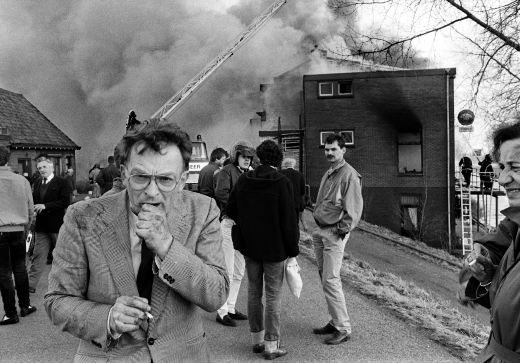
Under the spell of right and wrong
Today, radical right-wing parties like the Dutch Party for Freedom (PVV) are full partners in debates in the political arena. In the 1980s and 1990s, it was a different story, according to Jan de Vetten. He studied the antithesis towards the Centre Party and the Centre Democrats. PhD defence 9 November.
Kedichem, March 1986. Members of the Centre Party (CP) and the Centre Democrats (CD) meet in a hotel to discuss cooperation. Outside, anti-fascist demonstraters go on the attack. Windows are smashed and smoke bombs are lobbed into the room. Fire breaks out. Most CP and CD members just manage to escape the flames, but the future wife of CD leader Hans Janmaat falls against a broken window. One of her legs has to be amputated.
Successors to Nazis
This act is typical of the violence with which the CP and CD were treated, comments Jan de Vetten. ‘Not just anti-fascists, but also other societal organisations, the media and the police dealt incredibly harshly with these political parties. Many Dutch people regarded them as the successors to nazism and fascism.’
‘Evil’ parties
After years of research - including in Janmaat's personal archives - De Vetten concludes that the Netherlands in the 1980s and 1990s was obsessed with a struggle against the 'evil' CP and CD. He concludes that because of this climate these parties were treated completely differently from other political parties. 'Janmaat's parties were not regarded as political opponents but as direct enemies. You don't talk to such parties, you fight them.'

Cordon sanitaire
The CP and the CD were excluded from the political arena. The other political parties refused to enter into debate with them or to work together with them, and so they put up a cordon sanitaire around them. In his 13 years as a member of parliament Janmaat was not interrupted even once during the General Political Debate after Prince's Day, one of the most important debates in the political year. And in the early days of his career, it was not uncommon for the Lower House to empty when he was speaking.
Ideological basis
Societal organisations also did their utmost to combat the extreme right-wing parties. The Anne Frank Foundation, for exanple, distributed many publications and press releases about the CP and Janmaat, as well as organising legal cases and demonstrations. De Vetten: ‘The Foundation tried to bring an ideological element to the fight against the CP and the CD, and ultimately to influence public opinion.'
Pim Fortuyn
According to De Vetten, the opposition to the CP and the CD was not an exceptional occurrence in the Netherlands. Earlier, the National Socialist Movement (NSB) and the Dutch Communist Party (CPN) met with similar strong opposition. It was only after Pim Fortuyn came on the scene that it became possible to express criticism of such issues as immigration and integration. This had to do with the shock caused by the attacks in New York in 2001. De Vetten commented, 'Today it's possible to have normal contacts with a radical right-wing party like the Party for Freedom (PVV), and to engage in debate with them. That's a sign that the party is now regarded as a legitimate political opponent, and not as an evil enemy.'
Book: 'Under the spell of good and bad'
Jan de Vetten's PhD research will be published in book form. ‘In de ban van goed en fout’ is the first work to describe - based on archive research and interviews - the fight against the CP and the CD, and the reaction of the two parties. Why was there such strong opposition? Was the anthesis between these parties and the rest of society mainly on the grounds of moral issues? Was the Netherlands, in short, obsessed with 'good' and 'evil'?
